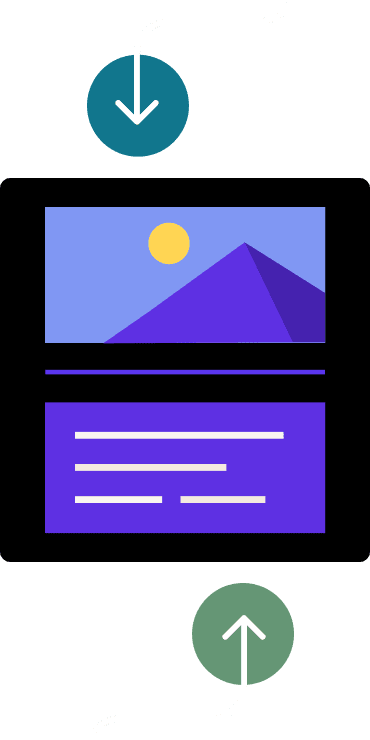Client discovery calls are essential for independent businesses to determine if there’s a good fit with potential clients. It also gives you more information to close the sale or book the project. To make the call successful, use these tips and tools.

Client discovery calls are an important step in the sales process, especially for independent businesses. This isn’t just because discovery calls determine whether the customer is a good fit—though that’s certainly their main goal.
It’s because smaller service providers already have limited time and resources to spare for every potential client. Each discovery call ideally should lead to a concrete sales opportunity if there’s a good match with your services.
Use these tips to ensure you’re getting the most out of each call; plus, hear from other independent business owners about how they conduct their discovery sessions.
Jump to:
- What makes a successful client discovery call?
- What should go into a discovery call agenda?
- What discovery call questions should you always ask?
- How to follow up after your discovery call
- Tips for getting the most out of your sales discovery calls
- Supercharge your sales discovery calls with HoneyBook
What makes a successful client discovery call?
A successful client discovery call should be an interactive conversation that helps both you and the potential client get to know each other. It’s a chance for you to learn about their needs, goals, challenges, and expectations to determine if there’s a good fit between your services and what the client is looking for.
The key elements that make a great discovery call include:
- Providing an agenda ahead of time so your client knows what discovery questions you’ll ask during the call
- Setting the tone at the beginning of the call to show your personality and start building a rapport
- Asking open-ended questions that allow clients to provide detailed answers
- Listening attentively without interrupting or trying to steer them away from certain topics
- Making sure all of the information exchanged is clear and concise
- Summarizing key points at the end of the meeting so nothing gets lost
Overall, the call should help you evaluate qualified leads so you can determine whether it makes sense for them to move further into your sales process.
I have found that listening carefully during the discovery call, taking notes (via the Notes section in HoneyBook), and then tying those back to my services and how I can assist them has been really helpful for conversion.
Potential clients feel heard and understood, and because the services are tied back to the specific pain points they described, they feel they have found a solution to their problem.
– Geily Romero, Accountant and Fraction CFO at Cutting Edge Financial Solutions
What should go into a discovery call agenda?
Now that you know what a successful client discovery call should look like, it’s time to consider exactly what to include in your agenda. Of course, each call should be customized to the new client you’re dealing with, but remember that at this stage, your goal is to learn more about them and ensure they’re ready for the sales pipeline.
Review your agenda carefully with your clients within the first few minutes of the call. Let them know what to expect so they can be prepared for what’s coming. This small step also keeps everyone on task and aligned in the qualification process.
Here are the pieces to include in your discovery call agenda:
1. Goals of the meeting
First, cover the reasons you’ve scheduled this discovery call and why it’s important. What do you want to accomplish? Leave room for the client to also chime in with their goals for the initial call, too.
2. Your introduction
Next, introduce yourself and your business. Keep it brief, but provide an overview of how long you’ve been in business, why you started in the first place, your mission and values, the types of clients you work with, and any other important points you want new clients to know about you.
3. Client introduction
Allow clients plenty of time to introduce themselves. What are their priorities right now? What are they looking for in a business partner? What’s their why? This allows them to get excited about what they’re doing and show you who they really are.
4. Primary challenges the client is facing
This is a great time to then dive into the client’s top challenges. Ask them what led them to your business. Ask about their industry and the current overall landscape. You could promote precision by asking specifically for their top three challenges this year, or simply what their number-one challenge is at the moment.
5. How your business can help
You can then talk about how your business helps with their unique challenges. This is when you can hit on your process and your solutions in more detail. Let the client know that you hear their concerns and are ready to solve their problems. Be specific about how your business goals align with theirs.
6. Questions the client has about the business
Open up the floor to see what the client wants to know about you. They may have initial questions about timeline, approach, and even payment structure. Have these details ready so you can practice transparency and give them a solid idea of what the relationship will look like. Remember that the discovery call is an opportunity for both of you to discover more about the other.
7. Next steps
The last component of your agenda should be a clear outline of what happens next. This may be a second call, an in-person meeting, a meeting with other people from your business, or submitting paperwork. Whatever it is, make sure the client knows exactly what the expectations are and who is responsible for the next step.
The great thing about having a discovery call agenda is that you can plug and play for each new client, making small adjustments as needed. Another component to consider is what your must-have questions are under each of those agenda items. These questions should be asked every single time so you always get the information you need.
Here are discovery call questions you should always ask:
- What are your current business goals? This question allows the client to open up about what’s on the horizon for them. Ask this question early to get the momentum going and get them talking about what excites them.
- What are your current business challenges? As mentioned, your agenda should include a place for challenges. These challenges likely drove the client to work with you, so it presents the perfect opportunity to assess and encourage the ongoing business relationship.
- What would be a successful outcome of our work together? Expectations should be set early on. By asking what kind of outcome the client expects to see, you’re getting on the same page and ensuring those expectations are realistic and achievable.
- What is your target budget? Asking about money can be uncomfortable, but it’s important nonetheless. Leave room to ask what the client is considering in terms of budget to ensure alignment. This must be completely covered early on in the relationship.
- What are your timeline expectations? Asking where the client is regarding timing is crucial. This is where you can loosely map out what your shared timeline is for service delivery so you both know what the next few months to a year will look like.
These questions are a must so both parties have the foundational information they need to succeed. They should be staples in your discovery call agenda.
takes the next step. However, you should always follow up with your new client, even if the ball’s in their court. Here are a few strategies for following up post-call:
- Send out a brief thank-you email that summarizes key points from the call.
- Show gratitude for their time.
- Express excitement about starting this relationship.
- Provide the information and documents you promised promptly.
- Deliver contact information for anyone else within your business they may need to contact.
- Send an introductory email including another staff member they’ll be working with.
- Ask the client if there’s anyone else they would like to bring into the conversation.
- Keep correspondence professional and hopeful.
- Emphasize open communication so the client knows they can always reach out with questions.
Avoid going radio silent after your new client discovery call. Show them you value their time and that you’re taking next steps seriously. Make them feel like a top priority. Ensure it’s clear where you’re going from here and when they should be ready to move forward.
HoneyBook’s platform helps you accomplish goals like these when you’re working with new clients. Make client management easier by working in just one software.
Tips for getting the most out of your sales discovery calls
The same key elements above are applicable to most client calls. What makes sales calls special is how you should approach them. Here are some actionable tips you can use to prepare, ask the right questions, and get the right answers from your initial sales calls.
1. Do your pre-call research to come prepared
Before any call with a potential client, review your ideal customer profile. Think about the qualities they have, and which questions you can ask to vet them. Knowing what to look for in their answers will help you get more out of the process.
Before the call, you can also spend some time learning from their website and social media accounts as well as any information you gathered through an intake form. Think about your clients from similar industries or with similar needs and how you solved similar problems for them. You can come prepared with specific case studies or testimonials that directly apply to your potential client.
I generate a task to prep for the call the day prior, and this is when I review their intake form and do a few minutes of online research into their organization. I put these notes in my private details in HoneyBook so I can reference them as we meet.
I also keep HoneyBook open during the sales call to take notes and document deliverables in the private details area. This helps as I normally make the proposal a few days later and can recall what they need and any variances from my normal framework proposal.
– Dr. Michael Tatonetti, CEO of Pricing for Associations
2. It’s the quality, not the quantity, of questions
Did you know that it takes around 11 to 14 questions for top sales reps to finish a successful discovery call? The number of questions you ask will always vary depending on your business, but what you ask means more than how much you ask.
Focus on questions that let you better understand your potential client’s current and future needs, which includes things like their own discovery process. Again, your prep work comes into play here. If you’ve solved similar problems before, you’ll have good context to work with and the confidence to back up your claims.
Listen more, talk less. Foster an environment where your client can express their obstacles, what’s worked, and what hasn’t. Then and only then should you speak and prescribe which service or solution is best. When we listen we learn.
You can also start your call with transparency that if you feel you can help them you’ll save some time to discuss how you can work together.
– Matthew Eriksen, Brand Designer and Business Coach at Good Brand Partners
3. Follow up and follow through
After the call, make sure to recap what you discussed before signing off. That doesn’t have to be a long-winded dialogue—just a few sentences that summarize the prospect’s pain points and next steps. You may want to go ahead and discuss the product or service that would be a good fit, or simply let them know when you’ll be sending an email with a personalized quote.
Lastly, remember to be prompt in sending over any documents or solutions your prospective client may need if they made any requests during the call so that you remain top of mind throughout their decision-making process.
4. Take notes and move on
Even if the call didn’t result in a sale, make sure to take notes from the conversation. This will help you with future calls with other potential clients, as it can give you more context about their needs.
At this point, you should have all the information you need to assess how viable they are as a client and whether or not your offerings match well with their needs—even if that means being honest enough to tell them that what they want isn’t something your company delivers. Be polite but firm. Prioritize value-based solutions over short-term wins so both parties benefit over the long term.
5. Leverage technology to maximize efficiency
If you’re making sales discovery calls with potential clients, it pays to invest in the right tools. With modern customer relationship management (CRM) and sales automation systems, for example, you can quickly get a full picture of each lead before committing to any calls—including previous interactions and notes from emails or chats.
This helps build trust since they know that you’re taking the conversations seriously while helping you stay organized and saving time. Tools like these can significantly impact your prep work and considerably aid with the call itself because of how much background information you have.
The tools you have on hand can make or break a discovery call in the same way that they can bolster or hinder the entire sales process.
Supercharge your sales discovery calls with HoneyBook
HoneyBook offers the tools you need to bolster your discovery calls and improve your overall sales process. Through interactive files, for example, you can consolidate the discovery process through branded questionnaires that help evaluate a potential client’s fit. You can also reach out with payment reminder emails and receive direct payments through the online payment software. The scheduler tool can also help you seamlessly book discovery calls and combine scheduling with other actions, including payments, online contracts, and more.




